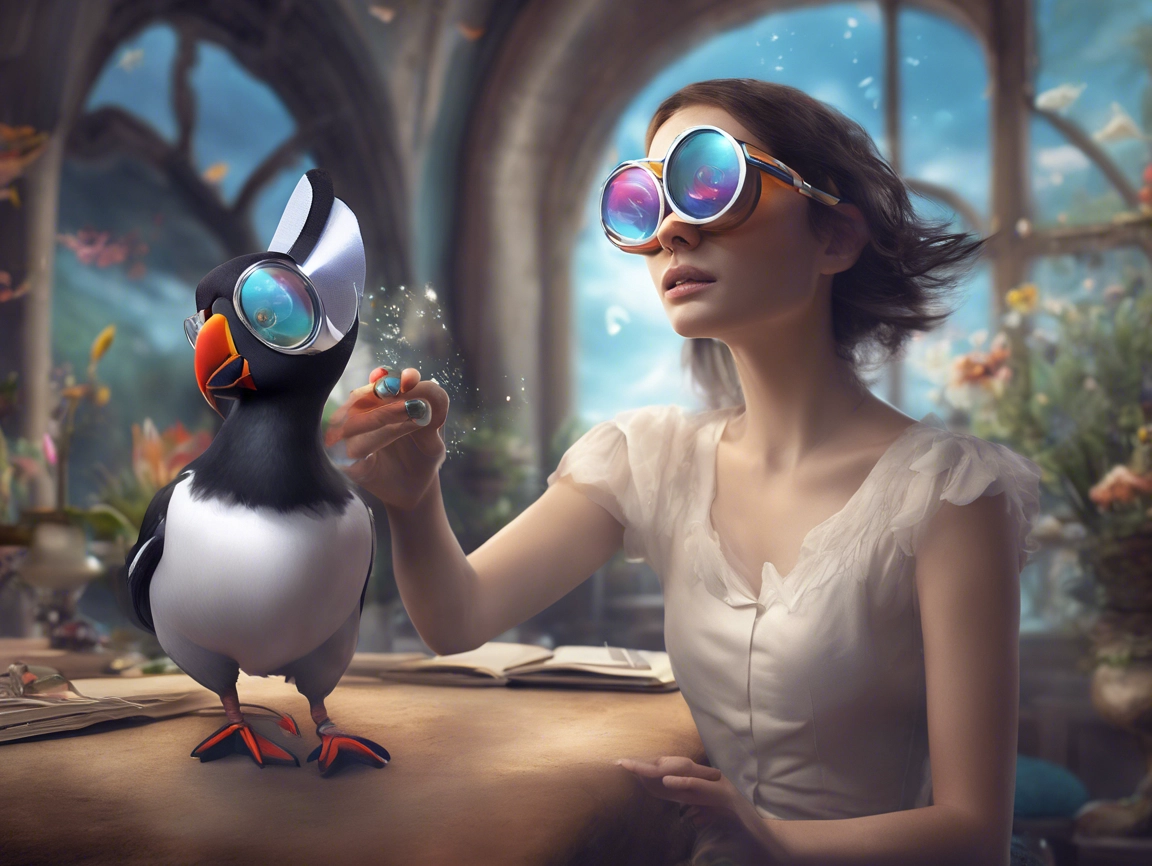In the latest AI news, Meta (formerly Facebook) is making waves with its development of new mixed reality glasses, code-named ‘Puffin’. This ambitious project aims to revolutionize the way we interact with digital content by creating a lighter, more practical alternative to current bulky headsets. Let’s dive into what we know about this exciting development and its potential impact on the tech landscape.
The ‘Puffin’ Project: What We Know So Far
- Meta is developing new mixed reality glasses under the codename ‘Puffin’.
- The goal is to create a lighter, more user-friendly alternative to current VR/AR headsets.
- The project is part of Meta’s ongoing investment in the metaverse and extended reality technologies.
Key Features and Innovations
While specific details are still under wraps, based on industry trends and Meta’s previous work, we can speculate on potential features:
- Lightweight Design: A focus on comfort for extended wear, possibly using advanced materials.
- Advanced Optics: High-resolution displays with a wide field of view.
- Spatial Audio: Immersive sound that reacts to head movement and environment.
- Hand and Eye Tracking: Natural interaction without the need for controllers.
- AI-Powered Contextual Awareness: Understanding and responding to the user’s environment.
Potential Applications
The ‘Puffin’ glasses could have far-reaching applications across various sectors:
1. Professional Use
- Remote Collaboration: Enhanced virtual meetings and collaborative workspaces.
- Training and Simulation: Immersive learning experiences for complex tasks.
- Design and Prototyping: 3D visualization for architects, engineers, and designers.
2. Entertainment
- Gaming: More immersive and physically comfortable gaming experiences.
- Media Consumption: Personal, portable cinema experiences.
- Live Events: Enhanced viewing of concerts, sports, and other events.
3. Education
- Interactive Learning: Bringing abstract concepts to life through 3D visualization.
- Virtual Field Trips: Exploring historical sites or far-off locations from the classroom.
- Accessibility: New learning opportunities for students with physical limitations.
4. Healthcare
- Surgical Planning: 3D visualization of patient data for preoperative planning.
- Telemedicine: Enhanced remote consultations and diagnoses.
- Therapy: New tools for treating phobias, PTSD, and other mental health conditions.
The Role of AI in ‘Puffin’
Artificial Intelligence is likely to play a crucial role in the functionality of these glasses:
- Scene Understanding: AI algorithms to interpret and respond to the user’s environment.
- Natural Language Processing: Enabling voice commands and real-time translation.
- Predictive Interactions: Anticipating user needs based on context and behavior patterns.
- Content Generation: AI-powered creation and adaptation of AR content in real-time.
Challenges and Considerations
Developing revolutionary mixed reality glasses comes with its share of challenges:
- Battery Life: Balancing power consumption with the need for a lightweight design.
- Privacy Concerns: Addressing issues related to always-on cameras and sensors.
- Social Acceptance: Overcoming the stigma associated with wearing tech devices on one’s face.
- Content Ecosystem: Developing a robust library of applications and experiences.
- Health and Safety: Ensuring long-term comfort and addressing potential eye strain issues.
Impact on the Tech Landscape
The success of ‘Puffin’ could have significant implications:
- Accelerated AR/VR Adoption: More user-friendly devices could drive mainstream acceptance.
- Shift in Computing Paradigms: Potential move away from traditional screens towards wearable interfaces.
- New Developer Opportunities: Opening up new avenues for app and content creation.
- Competition in the XR Space: Likely to spur innovation from other tech giants.
Preparing for a Mixed Reality Future
As we anticipate the release of ‘Puffin’ and similar technologies, various stakeholders should prepare:
- Businesses: Explore potential use cases and integration strategies.
- Developers: Familiarize themselves with AR/VR development tools and best practices.
- Educators: Consider how mixed reality could enhance learning experiences.
- Policymakers: Address privacy and safety regulations for wearable tech.
The Bigger Picture: Meta’s Vision for the Metaverse
‘Puffin’ is more than just a new gadget—it’s a crucial step in Meta’s broader vision for the metaverse:
- Bridging Physical and Digital: Creating seamless transitions between real and virtual worlds.
- Always-On Connectivity: Enabling persistent digital overlays on the physical world.
- New Social Interactions: Redefining how we connect and communicate in digital spaces.
Conclusion
Meta’s ‘Puffin’ project represents an exciting step forward in the evolution of mixed reality technology. By aiming to create lighter, more practical mixed reality glasses, Meta is working to overcome some of the key barriers to widespread AR/VR adoption.
While we await more concrete details about ‘Puffin’, it’s clear that this development could have far-reaching implications across numerous industries and aspects of daily life. From revolutionizing remote work to transforming entertainment and education, the potential applications are vast and varied.
As with any transformative technology, ‘Puffin’ will likely bring both exciting opportunities and new challenges to navigate. It will be crucial for developers, policymakers, and users alike to engage thoughtfully with these new tools as they emerge.
Stay tuned for more updates on this exciting development in AI news and mixed reality technology. The future of how we interact with digital content is being shaped before our eyes, and projects like ‘Puffin’ are leading the charge into this new frontier.







